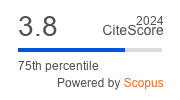Article | Open Access
Conceptualizing Testbed Planning: Urban Planning in the Intersection between Experimental and Public Sector Logics
| Views: | 6403 | | | Downloads: | 4494 |
Abstract: Urban planning is, in many countries, increasingly becoming intertwined with local climate ambitions, investments in urban attractiveness and “smart city” innovation measures. In the intersection between these trends, urban experimentation has developed as a process where actors are granted action space to test innovations in a collaborative setting. One arena for urban experimentation is urban testbeds. Testbeds are sites of urban development, in which experimentation constitutes an integral part of planning and developing the area. This article introduces the notion of testbed planning as a way to conceptualize planning processes in delimited sites where planning is combined with processes of urban experimentation. We define testbed planning as a multi-actor, collaborative planning process in a delimited area, with the ambition to generate and disseminate learning while simultaneously developing the site. The aim of this article is to explore processes of testbed planning with regard to the role of urban planners. Using an institutional logics perspective we conceptualize planners as navigating between a public sector—and an experimental logic. The public sector logic constitutes the formal structure of “traditional” urban planning, and the experimental logic a collaborative and testing governance structure. Using examples from three Nordic municipalities, this article explores planning roles in experiments with autonomous buses in testbeds. The analysis shows that planners negotiate these logics in three different ways, combining and merging them, separating and moving between them or acting within a conflictual process where the public sector logic dominates.
Keywords: experimental governance; institutional logics; urban experimentation; urban planning; testbed planning
Supplementary Files:
Published:
© Lina Berglund-Snodgrass, Dalia Mukhtar-Landgren. This is an open access article distributed under the terms of the Creative Commons Attribution 4.0 license (http://creativecommons.org/licenses/by/4.0), which permits any use, distribution, and reproduction of the work without further permission provided the original author(s) and source are credited.


